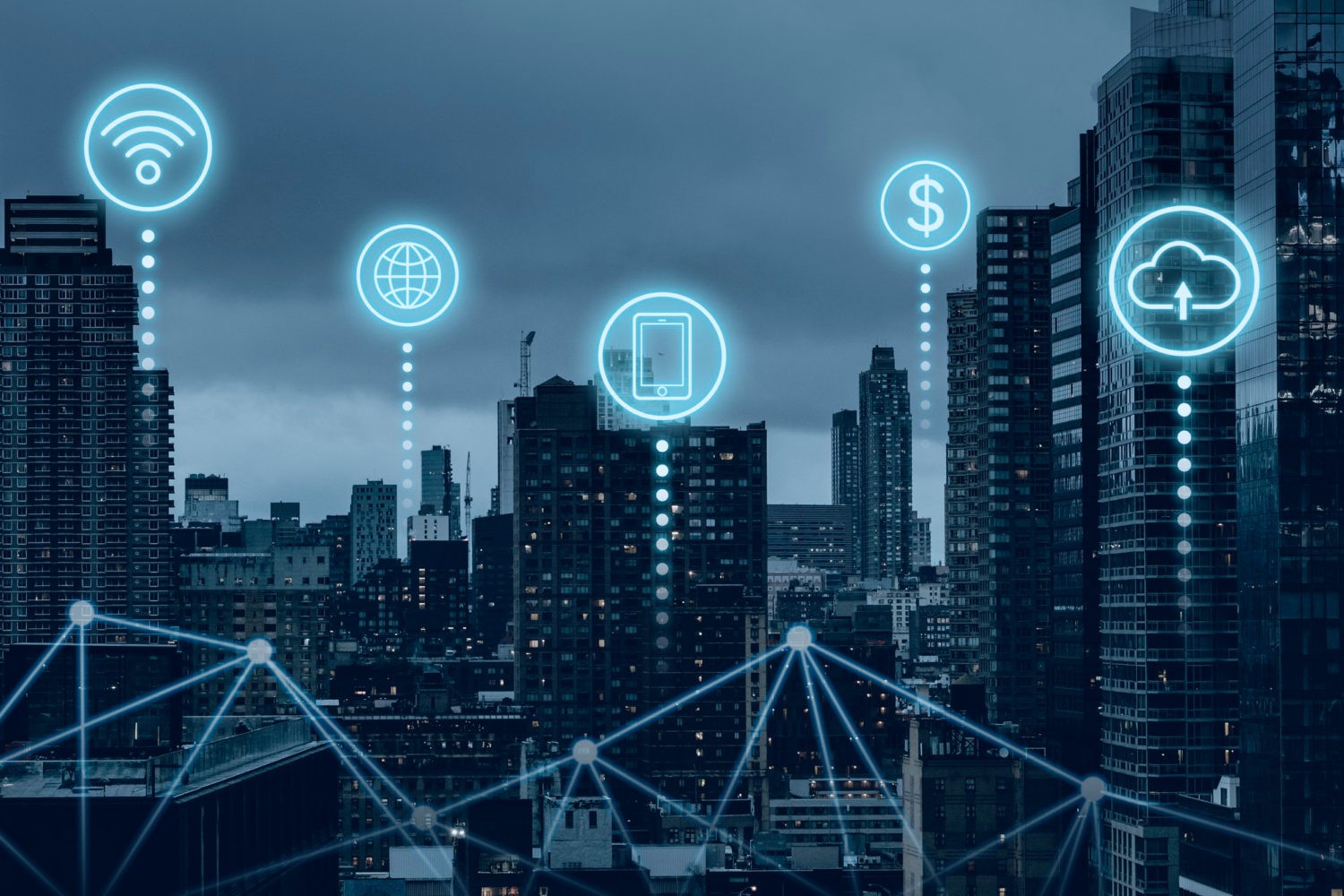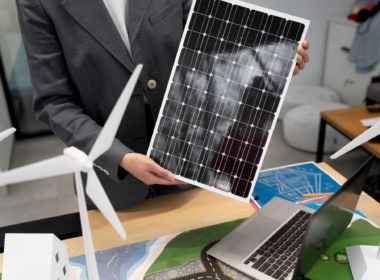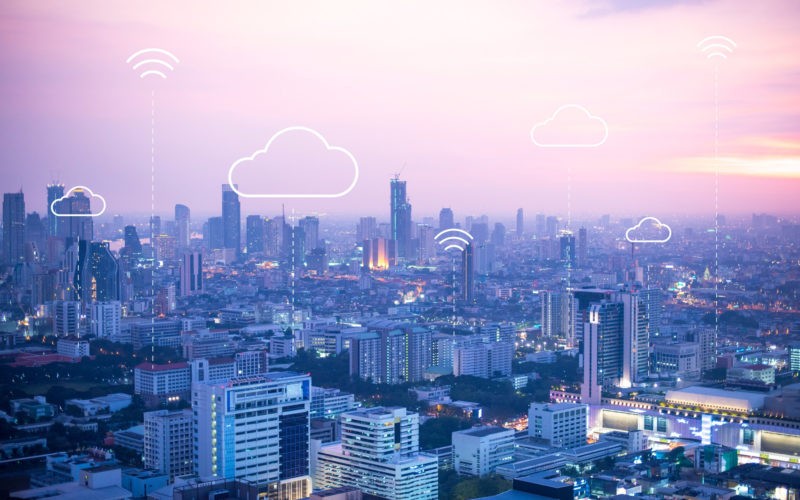What makes a city thrive in an era of rapid technological change and growing environmental challenges? Urban infrastructure (roads, bridges, power grids, and transit systems) has always been the backbone of economic growth and societal progress. From ancient aqueducts to modern smart cities, the way we build and manage infrastructure has shaped how people live, work, and move. Today, many cities face a crisis as aging systems struggle to meet the demands of expanding populations and climate pressures.
However, emerging technologies, including AI-driven urban planning and advanced energy solutions are redefining how cities operate. By examining the past, analyzing present challenges, and exploring future innovations, we can understand the critical role infrastructure plays in building smarter, more resilient urban environments.
The Evolution of Cities Through Infrastructure — How Innovation Shapes Urban Life
Early Urban Infrastructure and Ancient Cities
Ancient civilizations developed infrastructure to support trade, defense, and daily life, laying the foundation for modern cities. The Romans built extensive road networks and aqueducts, ensuring efficient transportation and water supply, while the Egyptians constructed irrigation systems to sustain agriculture.
In Mesopotamia, the first planned cities featured drainage systems and brick-paved streets, showcasing early urban engineering. These innovations enabled population growth, economic expansion, and centralized governance, demonstrating how infrastructure was essential to urban development even in ancient times.
The Industrial Revolution and the Birth of Modern Infrastructure
The Industrial Revolution triggered a transformation in urban infrastructure, driven by rapid industrialization and population surges. Railways connected cities and enabled large-scale movement of goods and people, while steam-powered factories required extensive energy and transportation networks.
Sanitation systems, including sewer networks, were introduced to combat disease in overcrowded cities, significantly improving public health. Electricity grids and gas pipelines soon followed, powering streetlights, factories, and homes, setting the stage for the modern urban landscape.
The 20th Century Boom — Highways, Suburbs, and Public Transit
The 20th century saw the expansion of highways and suburban development, reshaping urban life as automobiles became widespread. The U.S. Interstate Highway System, launched in the 1950s, connected cities and fueled economic growth, but it also contributed to urban sprawl.
Meanwhile, public transit systems, including subways and buses, were developed to accommodate growing urban populations, although many were later neglected in favor of car-centric infrastructure. The rise of skyscrapers and reinforced concrete allowed cities to expand vertically, maximizing space and efficiency in densely populated areas.
The Digital Age and Smart Infrastructure
The late 20th and early 21st centuries ushered in the digital age, integrating technology into urban infrastructure for greater efficiency and connectivity. High-speed internet, fiber-optic networks, and wireless communication became essential for modern economies, while IoT-enabled infrastructure improved city management through smart traffic systems and energy-efficient grids.
Advances in materials and construction techniques, such as prefabrication and automated building technologies, have accelerated urban expansion. As cities continue evolving, digital infrastructure is becoming as critical as physical infrastructure, shaping the future of urban living.

Technology and the Future of Urban Infrastructure
AI and Data-Driven Urban Planning
Artificial intelligence and big data are revolutionizing urban planning by enabling predictive modeling, real-time analytics, and automated decision-making. AI-powered traffic management systems optimize signal timing and reroute vehicles to reduce congestion, while predictive maintenance algorithms identify infrastructure failures before they occur, preventing costly breakdowns.
Smart sensors embedded in roads, bridges, and utilities provide continuous data streams that help cities allocate resources efficiently and improve service delivery. By leveraging AI, urban planners can design more resilient, efficient, and adaptive cities that respond dynamically to changing needs.
The Future of Urban Mobility
Technological advancements are reshaping urban transportation, with electric and autonomous vehicles set to reduce emissions and enhance efficiency. High-speed rail promises to revolutionize long-distance commuting, easing pressure on congested road networks. Micromobility solutions, such as e-scooters and bike-sharing programs, are integrating with public transit to offer seamless, last-mile connectivity.
Smart infrastructure, like wireless charging roads and AI-driven traffic flow optimization, will further enhance mobility in dense urban environments. As cities transition toward cleaner and more efficient transport systems, urban mobility will become faster, safer, and more sustainable.
Smart Cities and Next-Gen Infrastructure
The rise of smart cities is transforming urban infrastructure through the integration of IoT, automation, and renewable energy. Intelligent streetlights adjust brightness based on real-time activity, reducing energy consumption, while smart grids balance electricity demand and optimize power distribution.
Advanced construction methods, such as 3D-printed buildings and self-healing concrete, are improving durability and reducing costs. Gas turbine control systems also play a key role in urban power generation, providing efficient and flexible energy solutions that help cities integrate renewables while maintaining grid stability. Sustainable urban planning now incorporates green infrastructure, like vertical farms and carbon-neutral districts, to enhance environmental resilience.
Aging Cities and the Push for Sustainability
The Challenges of Aging Infrastructure
Many cities worldwide are struggling with deteriorating infrastructure that was built decades, or even centuries, ago and is now reaching the end of its lifespan. Crumbling roads, structurally deficient bridges, and outdated water and sewage systems pose safety risks and economic burdens, often requiring expensive emergency repairs instead of proactive upgrades.
Public transit networks, particularly in older cities, suffer from chronic underfunding, leading to inefficiencies, breakdowns, and declining ridership. Without substantial investment in modernization, aging infrastructure will continue to hinder economic growth, mobility, and overall urban resilience.
Climate Change and Urban Infrastructure
As climate change intensifies, urban infrastructure faces mounting challenges from extreme weather events, rising sea levels, and increasing temperatures. Coastal cities are particularly vulnerable to flooding, requiring reinforced seawalls, improved drainage systems, and resilient construction materials to withstand higher storm surges.
Heat waves place strain on power grids, leading to blackouts in cities that rely on outdated electrical systems. Aging water infrastructure is also at risk, with prolonged droughts and shifting rainfall patterns affecting supply and distribution. Without urgent adaptation measures, cities will struggle to maintain essential services and protect residents from climate-related disruptions.
The Shift Toward Green and Sustainable Infrastructure
To counteract these challenges, cities are increasingly adopting green infrastructure solutions designed for long-term sustainability and resilience. Renewable energy sources, such as solar and wind, are being integrated into urban grids to reduce dependence on fossil fuels and lower carbon emissions.
Sustainable construction practices, including energy-efficient buildings, green roofs, and permeable pavement, help mitigate environmental impact while improving urban livability. Smart water management, such as rainwater harvesting and wastewater recycling, is becoming essential in regions facing water shortages.
To make water reuse viable at scale, cities are upgrading treatment plants with membrane filtration, granular media, and activated carbon to remove solids, nutrients, and emerging contaminants. For planners and utility teams comparing options, this guide to effective wastewater treatment solutions details filtration methods — from screening and sand filters to MBR and RO — and how they integrate with sensor-driven monitoring for smarter, resilient operations.
Conclusion
How can cities keep up with growing populations, aging infrastructure, and the demands of a rapidly changing climate? The answer lies in balancing modernization with sustainability, leveraging both innovation and responsible urban planning. From ancient aqueducts to AI-driven smart grids, infrastructure has continuously evolved to support economic growth and human progress.
However, many cities now face an urgent need for reinvestment as roads, bridges, and utilities deteriorate under increasing strain. Advancements in AI, renewable energy, and automated systems, offer promising solutions for creating resilient, efficient urban environments. The future of infrastructure will depend on how well cities integrate new technologies while addressing the challenges of sustainability, equity, and long-term reliability.












